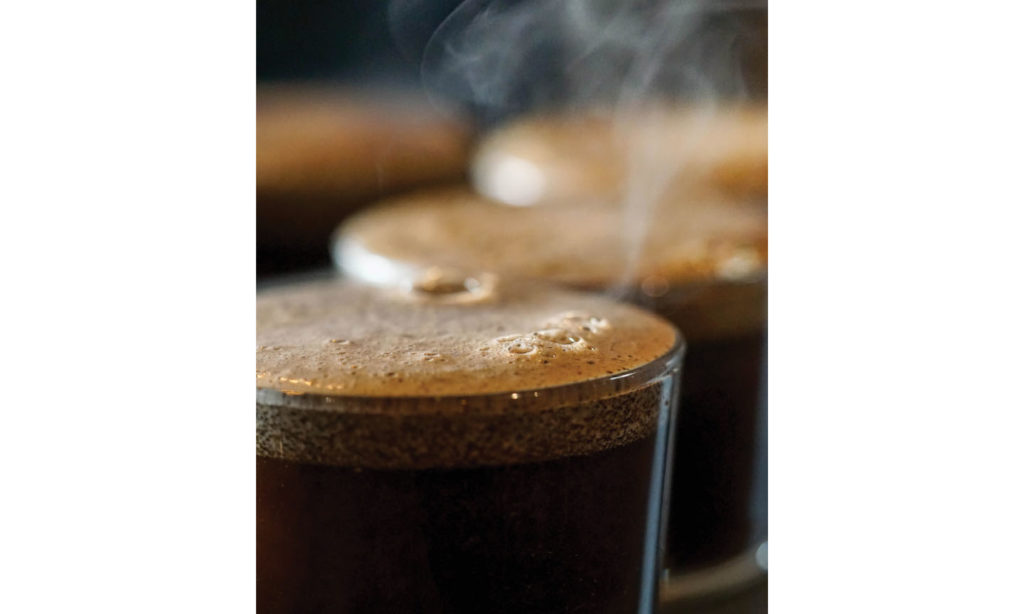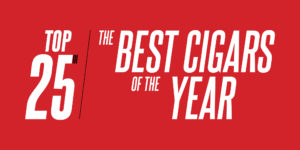Seed to Cup
Like any great tobacco, your coffee takes a long journey — guided by the expert hands of passionate farmers and artisans — to get from the farm to your mug.
– Words and photos by Andy Giambarba –
It’s a ritual we are all familiar with.
It provides that needed respite in otherwise hectic days.
It permits us a connection to the land where this venerated product originates.
Our enjoyment of it benefits hardworking farmers who produce it from seed and nurture it until it’s ready to export.
We seek out the masters who blend the flavors that please our particular palate.
What starts as a “special occasion” indulgence turns into a daily habit.
Coffee. I’m talking about specialty coffee.
Did you think I was talking about cigars?
The similarities between cigars and specialty coffee are remarkable. From their place of origin through production all the way to final presentation, there’s a shared passion and connection to the land. Whether we speak of “seed to smoke” or “seed to cup,” both products represent years of family history, hard work and an unmistakable artistic flourish. Both premium cigars and specialty coffee take our minds to contemplative spaces and leave their soul-satisfying mark on our palates and memories.
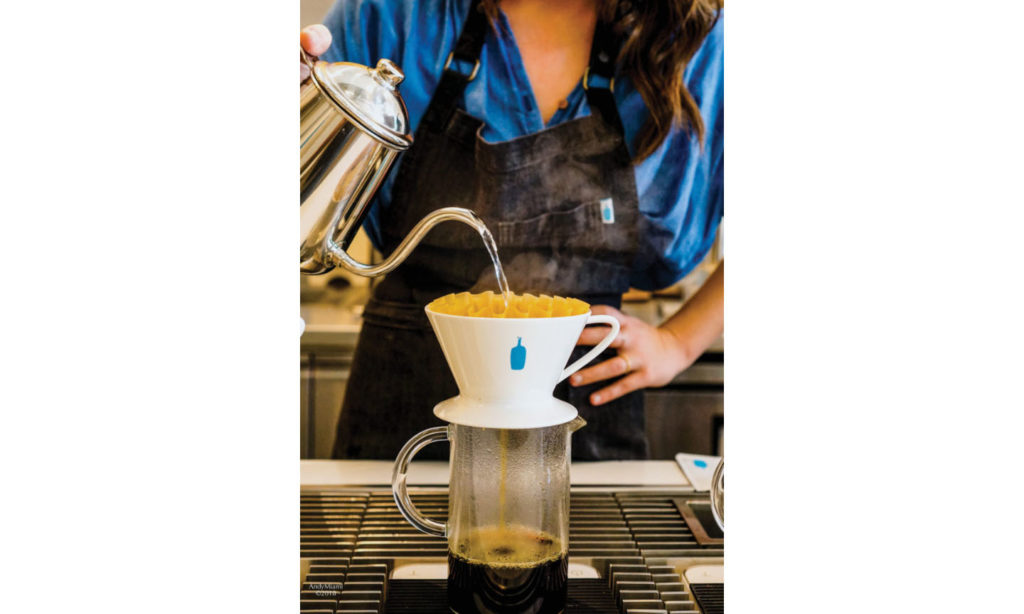
What is specialty coffee?
There are two types of coffee in this world: commodity coffee and specialty coffee.
Think of commodity coffee as the short filler cigar behind the cash register at the gas station. The beans used for this kind of application (fast food coffee, most supermarket coffee that comes in tubs or bricks) are all about delivering caffeine into your bloodstream, with no particular care in sourcing or roasting or packaging the beans. The marketing campaign might say otherwise, but it’s essentially unidentifiable coffee, roasted to smithereens, pre-ground, sometimes freeze dried dark brown stuff. It is brewed by unceremoniously pouring hot water over it, through the drip basket of the office coffee maker, where it sits, exposed to light and air and the continual heat of the burner. Same with the stuff at the restaurants that don’t care. The caffeinated stuff is in a glass carafe with a brown spout, the decaf in the same one with an orange spout; it sits and cooks until it’s all gone and then someone opens a packet and starts the process all over again.
Specialty coffee is raised with a different destiny, just like great tobacco. It’s not sold off as a commodity to companies that are going to turn it into something unrecognizable. The farmers — just like with tobacco — have chosen to spend the extra time, the extra care and the extra risk to grow something that will yield less, but will stand out as exceptional. They grow high quality Arabica beans instead of the commodity version bean known as Robusta. They expect their coffee beans (actually the seed inside the fruit of the coffee plant, otherwise known as the coffee cherry) to represent their work and the terroir of the region like a fine wine does. And they hope that every set of hands along the chain from seed to cup honors the product with similar effort.
Coffee production at an unimaginable price
Instead of getting lost in all the coffee specifics of altitude, varietals, processing methods and flavor notes, it is crucial to establish that the story of coffee, like tobacco’s, is about people — the farmers who grow and process the beans, the green buyers and roasters, all the way to the baristas. Those are the stories that lend depth to the product. You can smoke a Padrón without understanding the significance of the little hammer on the label, but you’ll never forget the story once you hear it. Like in the world of cigars, some of the people involved in coffee pay an unimaginably high price to bring their passion to market.
In 2016, I got the treat of my life, when I was skillfully driven up the road that leads to Strawberry Hill, through Irish Town, Gordon Town and all the way up to the region that produces Blue Mountain coffee in Jamaica. Tara Bradshaw, Chief Business Development Officer at Trafalgar Travel Ltd. in Kingston, had arranged for me to meet a historic figure in Jamaican coffee at his home high in the mountains. As we drove higher and higher — passing waterfalls, cafes, stores and churches, all the while avoiding some sphincter-tightening oncoming traffic — I was expecting to glean lots of information about the local coffee industry and production. It turned out to be so much more.
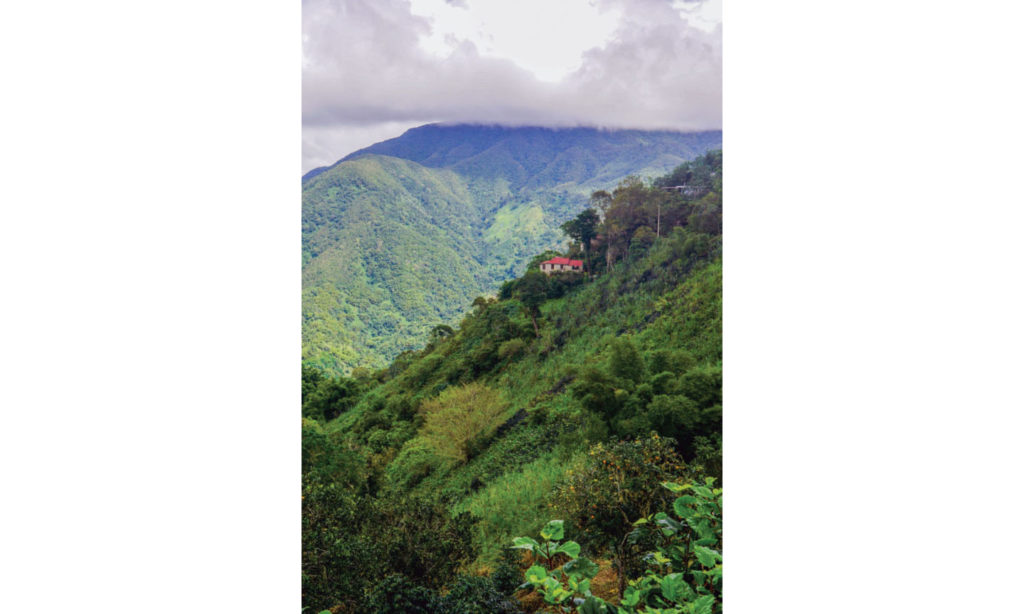
You walk down from the road into David & Chrissie Twyman’s family home, which is nestled into the side of the mountain. The windows were open to their breathtaking view. David’s father Alex and mother Dorothy had founded Old Tavern Blue Mountain Coffee Estate years before in the late ‘60s, when Jamaica eagerly sought out those who would help develop a nascent industry. Jamaica quickly realized that they had an export at the time that would compete with the world’s finest coffees. The Twymans’ farm was a standard bearer for the best of Jamaica’s Blue Mountain appellation.
Like any true producer, Alex Twyman wanted to do more than simply grow and harvest his product. He wanted to be able to process, roast and sell it too. The Jamaican Coffee Industry Board, which governed coffee production and exportation, told him that he couldn’t. Formed as a safeguard to protect the new industry and establish quality control, the Board had become controlling and the subject of corruption allegations. Unhappy with the limitations of Jamaica’s Coffee Board which only allowed Alex to grow, harvest and turn in the coffee fruit to be processed, he and his son Mark took matters in their own hands and decided that they would control the production of their own coffee, protecting it from being mixed with coffee of lower quality. Together, they petitioned for their own license to become legally able to process and sell their own coffee. They were relentless in their fight, which you can imagine might have angered a few folks who loved the status quo and the money it put in the pockets of those connected to the Coffee Board.
The day that Alex received his license, a truck with masked men also arrived on his property and shot Mark to death. Alex was free to sell his own coffee, but it had cost him an unimaginable price.
Those who work the land have always had my utmost respect. Farmers do magic, it seems. Or at least they try to harness the conditions under which magic occurs. They work tirelessly, physically, and without excuse as the land and climate offers them finite windows in which they must plant, tend and harvest their crop. Seeds turn into seedlings and seedlings into plants. Slowly and predictably plants flower and bear fruit. With the right care and more than a little luck, those leaves and fruits turn into products we love.
Tobacco farmers have their own stories of losing so much more than money in the pursuit of their dreams. They have to deal with confiscated lands and violence at times. In coffee, as in tobacco, farmers are also contending with natural challenges such as leaf rust, drought and hurricanes. And occasionally, like the Twymans, much, much more.
The coffee roaster is the cigar roller & blender
The vast majority of coffee arrives to a roaster as green coffee beans. Green buyers, as they are known, have sample roasted these coffees at origin and decided that they like a crop enough to purchase a lot of a certain size. Those lots are then packaged and sent to roasters all over the world. The roaster is the one responsible for coaxing all of the potential out of the bean, applying just enough heat to develop flavor, but without overdoing it and producing a bitter end product. Yes, that’s why certain coffees taste so bitter; they’ve been roasted too long. All of this occurs in seconds, with heating and cooling calibrated to the millisecond. As the farmer can take pride in producing an exceptional fruit (the green coffee bean), the roaster can bring out its stellar qualities or ruin it in seconds.
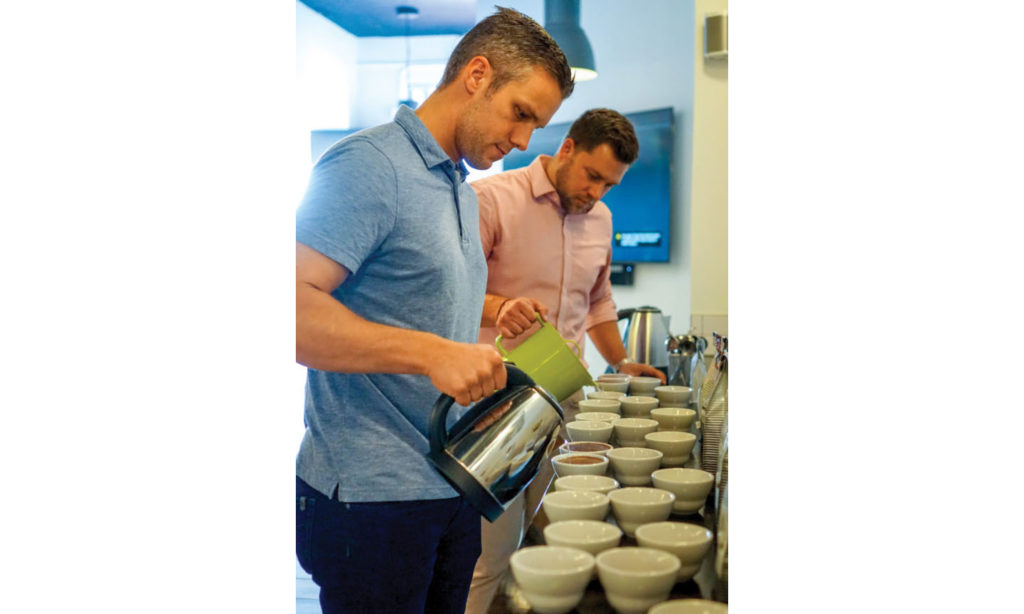
Paul Massard and Chris Nolte met at the University of Miami as fraternity brothers. Fast forward 10 years and the two now operate Per’La Specialty Roasters, a specialty coffee roasting company based in Miami and supplying specialty coffee to high-end hotels and restaurants all over the city. In a niche that is booming all over the U.S., you would think they look at other coffee roasters as their competition. Chris, however, is quick to set the record straight.
“Our biggest competition is bad coffee, not other roasters,” he said.
Paul is the company’s roaster, having spent a decade in coffee as a green buyer, working at origin and finally deciding that he wanted to control the end product: the flavor that helps so many of us around the world start our day on a great note.
A great coffee roaster, like a great cigar roller or blender, is equal parts artist and alchemist. They are able to take a natural product — green coffee beans in this case — and roast them to a point where they can fully express their origin’s terroir and the intention of the farmer. Roast them a split second too long after the “first crack” and years of labor turn into a charred and bitter product, salvageable only with too much sugar and cream. Roast them a second too little and the sweetness of the bean is underdeveloped, leaving notes so sour few will find it palatable.
Specialty coffees are available to consumers either as “single origins,” meaning all of the beans in the bag came from the same location and represent that one terroir, or as blends, a mix of two or three different beans that produce a harmonious end product when blended in precise proportions.
Like the master cigar blenders who combine filler, binder and wrapper to create a certain flavor profile, coffee roasters have the same dilemmas when dealing with limited size lots. They must figure out how to sub one bean for another when supplies are low, without changing the roast profile too much, so that the blended product remains consistent. Let’s face it; when baristas face sleepy hordes of commuters on a Monday morning, they want to produce the coffee their patrons have been longing for with no surprises.
A few minutes in the right or wrong hands
A farmer can spend years in backbreaking labor to produce the coffee cherries he is proudest of. He can painstakingly process them, separating the bean from the mucilage, drying them, packing them in the right types of bags and shipping them across the world. The roaster can apply heat to the beans with the precision afforded to him or her by the latest computer guided technology. Roasted, then bagged, the coffee makes its way to the local cafe.
That’s where the barista, distracted by his phone, over extracts the coffee and hands the customer a nice warm cup of yuck.
Isn’t it astounding that so much effort and care can go into the production of an exquisite product, only for it to be ruined mere feet from the hands of the consumers it was intended to delight? There are many reasons why a barista can make or break the specialty coffee experience. Everything from simple distraction to a lack of training to not understanding how to keep the elements “dialed in” can all derail the experience — no matter how pristine the coffee is before it is ground. It’s like a shop owner not knowing or not paying attention to the humidity in their store — the end result is those individually banded works of art being subpar or ruined.
“Must be quality control at the factory!” the consumer complains.
Nope.
Sometimes it’s just a passionless person who has been allowed to break the chain between producer and end user.
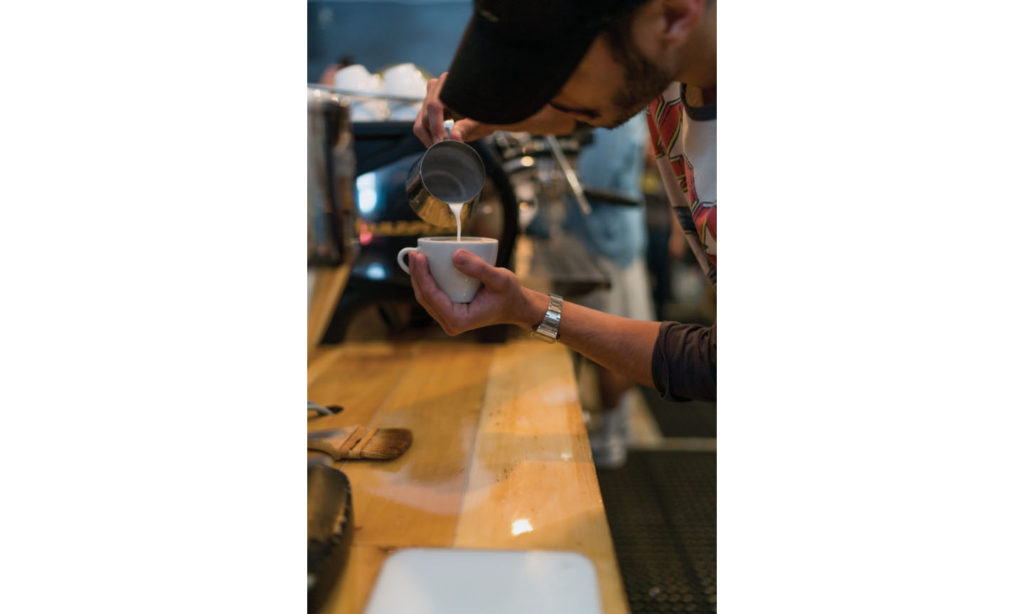
If you’re lucky, your coffee gets served to you by someone who has consciously chosen a career in specialty coffee. Those are the folks behind the espresso machines or pour over bars, who put that extra effort into making sure that you experience what resonates with them. It’s like the local chef who puts his heart into every dish because he has a message he’s trying to communicate. Or the cigar store owner who still enjoys the industry and goes the extra mile for his customers, putting time and effort into storage, humidification, ventilation — even making different cuts available — all the while guiding his customers towards what he knows their palates might enjoy.
For Sandra Walimaki of Counter Culture Coffee, each cup of coffee she served as a barista was a connection to fond memories of her Peruvian grandmother who roasted her own coffee and would carefully prepare it for her as a child. These memories formed her conviction about the specialness of the coffee moment. As she chose a career in coffee and people, her first stint as a barista was in her home city of Lima, Peru. From there she worked in a number of cities in the U.S., growing in her expertise as a barista and storyteller, teaching people about both coffee and the producers responsible for the delicious cup they were drinking. With a focus like that, her coffee career took off, culminating in her current role as customer relations manager for Counter Culture Coffee in Florida. It is a natural progression for someone who got into coffee as a barista because of coffee and people and is still working and excelling at her job with coffee and people.
When Sandra trains baristas, she makes sure to communicate that they are the final step in the process and they have a unique honor. Most coffee consumers will never meet the producer who grew the beans and most will never meet the roaster who has helped develop the coffee’s flavor. She makes sure that the baristas she trains “know the story and can tell the story” of what they are serving. They are the ones who interact with the customers and have a chance to explain how special the coffee they’re drinking is. By encouraging this storytelling, Sandra honors her grandmother who made the origin and ritual of coffee everything for her. As with premium cigars, the greatest representatives of specialty coffee are always the ones who feel the connection and the passion for what they share with the world.
If this article has piqued your interest in the world of specialty coffee and you find yourself asking how to brew your own, keep reading, I’ve compiled a list of equipment, some facts about coffee, and even a recipe to begin to brew specialty coffee at home.
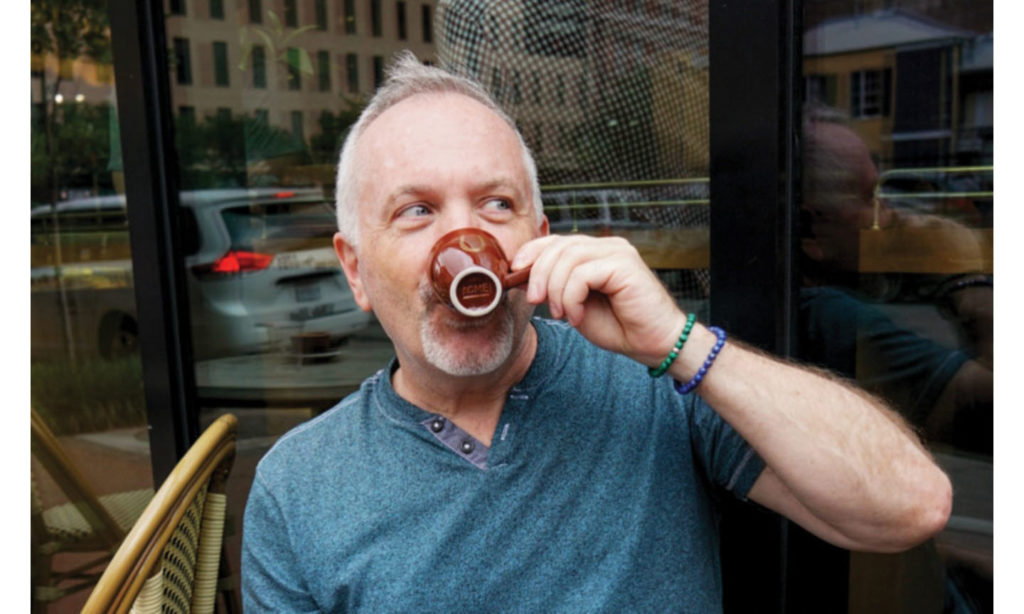
Andy Giambarba is in insurance by day and loves helping businesses manage risk as much as he likes coffee — and he loves coffee. If he’s not doing one or the other, he’s probably cooking for or eating with friends. His palate, photography and deep appreciation for culinary craftsmanship have earned him the respect of Miami chefs and foodies alike. Follow him at @andymiami and @nowbrewing.coffee on Instagram.
Some facts about Coffee (sidebar inside articule)
- A commonly held belief is that coffee was first discovered over a thousand years ago, by an Ethiopian goat herder who watched his goats react with extra energy when they ate the fruit of a certain bush.
- Specialty coffee is grown in Central & South America, Asia, and Africa.
- Coffee beans come from the fruit of coffee bushes.
- This fruit is called the coffee cherry.
- Specialty coffee beans have to be picked by hand as they do not all ripen at once.
- The bean is the seed inside the fruit — imagine it being the pit inside of a cherry.
- The skin of the coffee fruit is called “cascara” and has now started to be used in beverages.
- After harvest and sorting, the majority of coffee fruit is processed to remove the seed from the fruit. The fruit is agitated by water to remove the skin and mucilage, exposing the beans. This process is known as “Washed Process.”
- Some coffee fruit is allowed to dry in the sun and the fruit portion is allowed to ferment — these beans exhibit notes of blueberry as the fermentation flavors penetrate the beans. This coffee process is known as “Naturally Processed.”
- Beans are then dried before packing.
- Like premium cigars and fine wine, the enemies of coffee are air and light.
- Specialty coffee is best if brewed no more than 30 days after the date of roasting.
- It is best not to store coffee in the freezer, but in an airtight container in a dark cool place.
- Although it seems counter-intuitive, the darker the roast, the lower the dose of caffeine.

